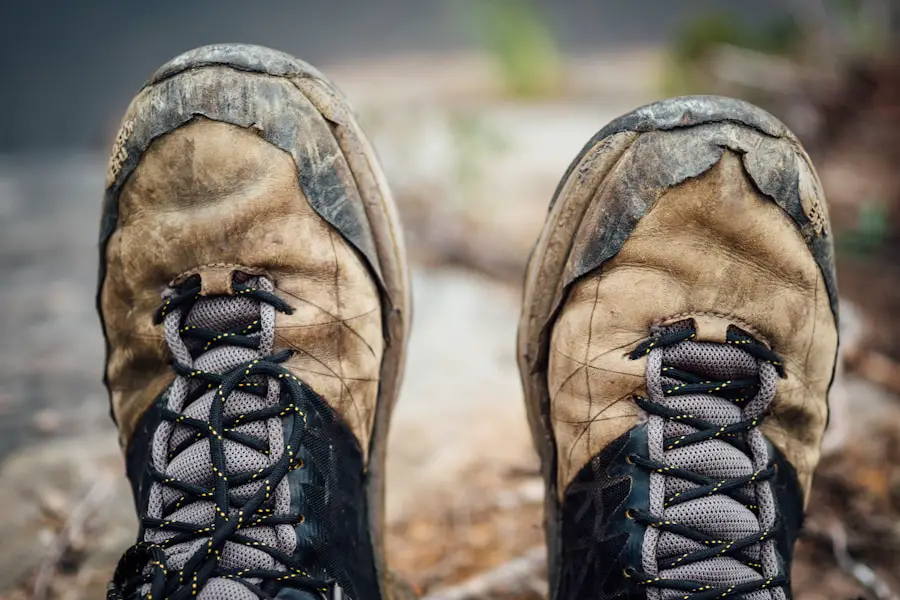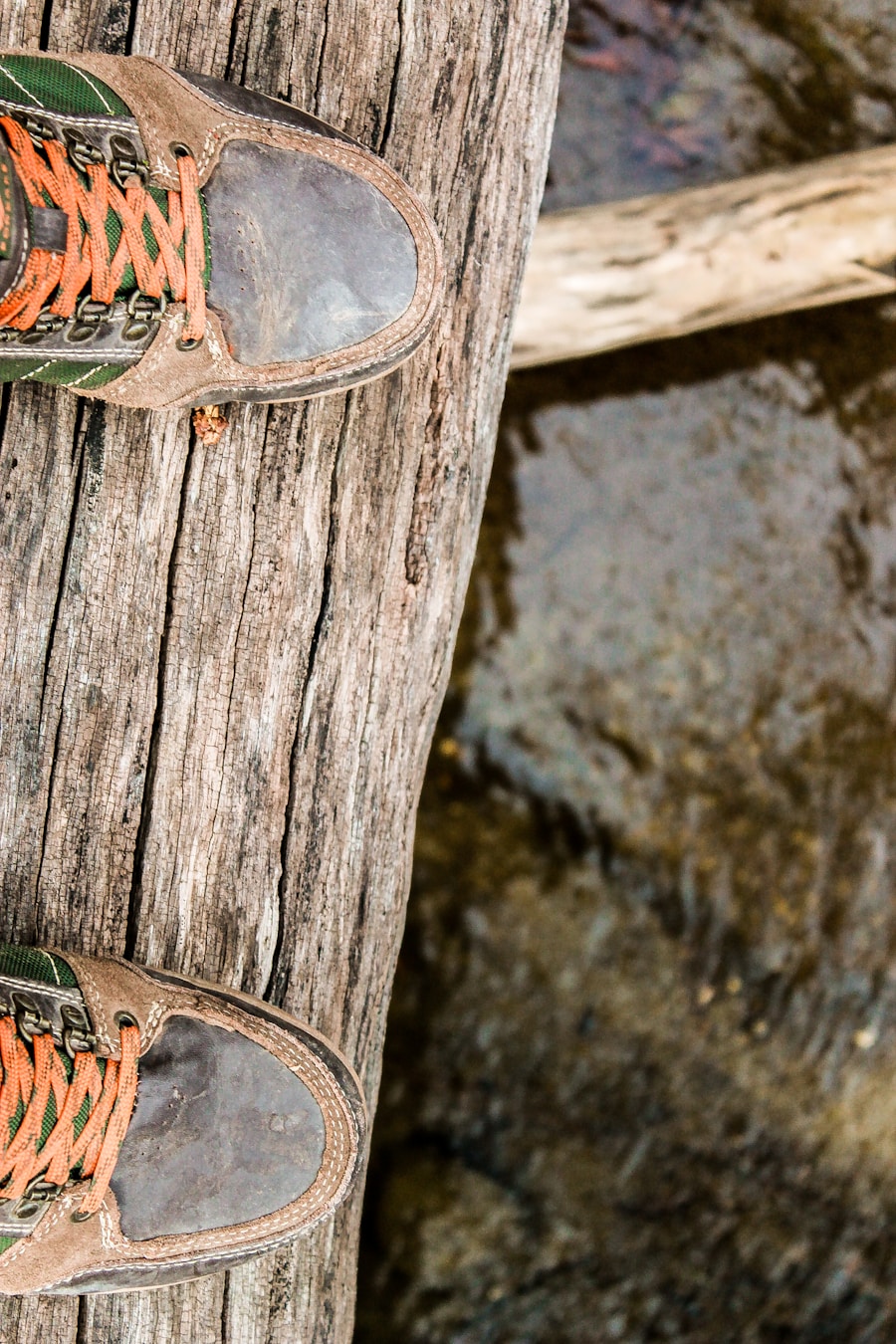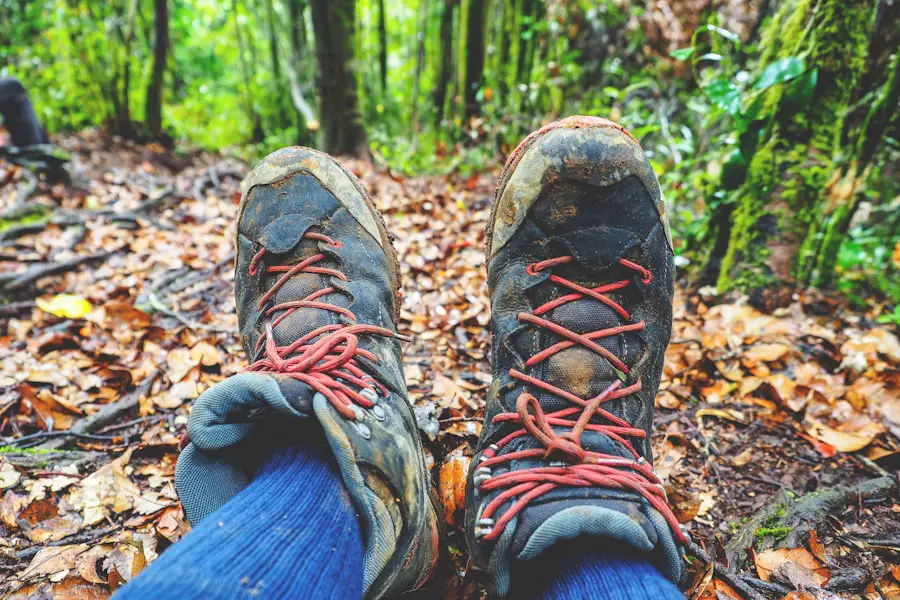When embarking on a hiking adventure, the first step is to assess your specific needs. This involves considering the type of terrain you will encounter, the duration of your hike, and the weather conditions you might face. For instance, if you plan to tackle rugged mountain trails, your footwear requirements will differ significantly from those needed for a leisurely stroll through a flat, wooded park.
Understanding these variables is crucial in selecting the right hiking boots or shoes that will enhance your experience rather than hinder it. Additionally, personal preferences play a significant role in determining your hiking needs. Some hikers prioritize lightweight footwear for speed and agility, while others may prefer a more robust boot that offers additional support and protection.
It’s also essential to consider your hiking style; are you a day hiker who enjoys short excursions, or do you lean towards multi-day backpacking trips? Each scenario demands different features in footwear, such as cushioning, ankle support, and even insulation for colder climates. By taking the time to evaluate these factors, you can make an informed decision that aligns with your hiking ambitions.
Key Takeaways
- Understanding your hiking needs is crucial for choosing the right hiking boots, whether it’s for day hikes, backpacking, or mountaineering.
- Proper fit is essential to prevent blisters, hot spots, and discomfort, so make sure to try on different brands and styles to find the best fit for your feet.
- Support and stability are important factors to consider, especially for rough terrain and long hikes, so look for boots with ankle support and a sturdy midsole.
- Durability and quality materials are key for long-lasting hiking boots, so invest in a pair made with high-quality leather, synthetic materials, and strong stitching.
- Traction and grip are vital for safety on slippery or uneven surfaces, so choose boots with a reliable outsole and aggressive tread pattern.
Importance of Proper Fit
The fit of your hiking footwear cannot be overstated; it is arguably the most critical aspect of your selection process. A proper fit ensures comfort and reduces the risk of blisters and other foot ailments that can arise from ill-fitting shoes. When trying on hiking boots, it’s advisable to wear the same type of socks you plan to use on your hikes.
This practice allows you to gauge how the boots will feel during actual use. Pay attention to the toe box; there should be enough room for your toes to wiggle without feeling cramped, especially when descending hills. Moreover, the heel should fit snugly without slipping, as this can lead to friction and blisters during long hikes.
It’s also important to consider the width of the boot; some brands offer various widths to accommodate different foot shapes. If you have particularly wide or narrow feet, seeking out brands that cater to these needs can make a significant difference in comfort levels. Remember that hiking boots often require a break-in period, so it’s wise to wear them on shorter walks before embarking on more challenging trails.
Support and Stability

Support and stability are paramount when selecting hiking footwear, particularly for those who venture into uneven or rocky terrains. A well-constructed boot should provide adequate arch support to prevent fatigue during long hikes. This is especially important for individuals with flat feet or high arches, as improper support can lead to discomfort and even injury over time.
Look for boots that feature contoured footbeds or removable insoles that can be replaced with custom orthotics if necessary. In addition to arch support, ankle stability is another critical factor. Hiking boots with higher collars offer additional support around the ankle, which can be beneficial when navigating steep inclines or declines.
This added support helps prevent ankle sprains and provides confidence when traversing challenging landscapes. However, it’s essential to balance this support with flexibility; overly rigid boots can restrict natural foot movement and lead to discomfort over extended periods. Therefore, finding a boot that offers both support and flexibility is key to a successful hiking experience.
Durability and Quality Materials
| Product | Durability Rating | Material |
|---|---|---|
| Backpack | 9/10 | Water-resistant nylon |
| Running Shoes | 8/10 | Breathable mesh and rubber sole |
| Tent | 9/10 | Ripstop polyester and aluminum poles |
| Outdoor Jacket | 10/10 | Gore-Tex fabric and YKK zippers |
The durability of hiking footwear is directly linked to the materials used in their construction. High-quality materials not only enhance the lifespan of the boots but also contribute to their overall performance in various conditions. Leather is a popular choice for its robustness and ability to withstand harsh environments, while synthetic materials often provide lighter options that are easier to break in.
Many modern hiking boots combine both materials, utilizing leather for durability in high-wear areas and synthetic fabrics for breathability and weight reduction. Additionally, pay attention to the stitching and construction methods used in the boots. Double-stitched seams are generally more durable than single-stitched ones, reducing the likelihood of separation over time.
Reinforced toe caps can also protect against rocks and roots that may cause damage during hikes. Investing in well-constructed footwear made from quality materials not only enhances performance but also ensures that your boots will endure the rigors of multiple hiking seasons.
Traction and Grip
Traction is a vital consideration when selecting hiking footwear, as it directly impacts your safety on various terrains. The outsole of a hiking boot plays a crucial role in providing grip; look for boots with deep lugs made from rubber compounds designed for traction on both wet and dry surfaces. Vibram outsoles are a popular choice among hikers due to their proven performance in diverse conditions, offering excellent grip on rocky trails and muddy paths alike.
In addition to lug depth and material, the design of the outsole can also affect traction. Some boots feature multi-directional lugs that enhance grip during ascents and descents, while others may have specialized patterns designed for specific terrains. For instance, if you frequently hike in snowy conditions, consider footwear with a tread pattern optimized for snow and ice.
Understanding the types of surfaces you will encounter on your hikes will help you select footwear that provides the necessary traction for safe navigation.
Waterproofing and Breathability

When hiking in unpredictable weather conditions or wet environments, waterproofing becomes an essential feature of your footwear. Many hiking boots incorporate waterproof membranes such as Gore-Tex or proprietary technologies that keep water out while allowing moisture from sweat to escape. This balance between waterproofing and breathability is crucial; if your feet become too hot and sweaty inside waterproof boots, it can lead to discomfort and blisters.
However, not all hikes require fully waterproof footwear. If you primarily hike in dry conditions or during warmer months, breathable materials may be more suitable. These materials allow for better airflow, keeping your feet cool and comfortable during strenuous activities.
Some hikers opt for a combination approach—choosing waterproof boots for wet conditions and breathable options for drier climates. Understanding the typical weather patterns of your hiking locations will guide you in selecting the appropriate level of waterproofing and breathability.
Weight and Comfort
The weight of your hiking footwear can significantly influence your overall comfort during long treks. Heavier boots may provide more support and protection but can also lead to fatigue over time, especially on extended hikes. Conversely, lightweight options offer agility but may sacrifice some level of support or durability.
It’s essential to find a balance that suits your hiking style; if you’re planning long-distance hikes or multi-day backpacking trips, lighter footwear may be advantageous. Comfort is subjective and varies from person to person; what feels comfortable for one hiker may not work for another. It’s crucial to try on various models and brands to find the right fit for your foot shape and size.
Consider factors such as cushioning, arch support, and overall flexibility when assessing comfort levels. Additionally, remember that comfort can be enhanced by wearing appropriate socks designed for hiking; moisture-wicking materials can help keep your feet dry and reduce friction.
Price and Value
When it comes to purchasing hiking footwear, price often reflects quality but does not always guarantee it. While it’s tempting to opt for cheaper options, investing in high-quality boots can save you money in the long run by reducing the need for replacements due to wear and tear or discomfort-related injuries. It’s essential to evaluate what features are most important for your hiking needs and find a pair that offers the best value within your budget.
Consider also the warranty or return policy offered by manufacturers; reputable brands often provide guarantees on their products, which can be an indicator of their confidence in quality. Reading reviews from other hikers can also provide insight into how well a particular model performs over time. Ultimately, finding the right balance between price and value involves understanding your specific needs and making an informed decision based on research and personal experience rather than solely on cost alone.
When looking for the perfect hiking shoe, it’s important to consider factors such as durability, comfort, and traction. A related article on TakeTravelInfo.com discusses the best hiking backpacks for multi-day treks, which is crucial for carrying all your essentials while on the trail. To ensure a successful hiking trip, having the right gear, including a reliable backpack and sturdy hiking shoes, is essential. Check out the article on the best hiking backpacks here.
FAQs
What are the key features of a good hiking shoe?
A good hiking shoe should have a durable and supportive outsole, a comfortable and cushioned midsole, a protective and breathable upper, and a secure lacing system.
What materials are commonly used in hiking shoes?
Hiking shoes are often made with materials such as leather, synthetic fabrics, rubber, and waterproof membranes like Gore-Tex to provide durability, support, and protection from the elements.
How important is proper fit in a hiking shoe?
Proper fit is crucial in a hiking shoe to prevent blisters, hot spots, and discomfort on the trail. It’s important to try on hiking shoes with the socks you plan to wear while hiking and to ensure there is enough room in the toe box.
What type of traction is important in a hiking shoe?
A good hiking shoe should have a tread pattern that provides reliable traction on various terrains, including rocky, muddy, and slippery surfaces. The outsole should also offer good grip and stability.
Are waterproof hiking shoes necessary?
Waterproof hiking shoes can be beneficial for hiking in wet conditions or crossing streams, as they help keep your feet dry and comfortable. However, non-waterproof shoes may be more breathable and lighter.
How often should hiking shoes be replaced?
The lifespan of hiking shoes can vary depending on usage, terrain, and care. On average, hiking shoes should be replaced every 500-1000 miles or when the tread is worn, the midsole is compressed, or the upper is damaged.
